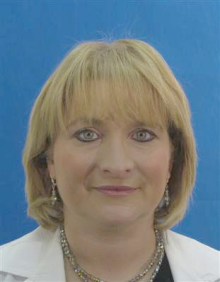
According to advertisements on the internet, Butcher’s Broom is just what a doctor would order for an intestinal annoyance–except that no doctor ever ordered the food additive for the 27-year-old man who lived near Jerusalem. He’d ordered this evergreen tree extract from an inexpensive on-line supplier in Bulgaria.
The man took his first dose right before the Jewish holiday of Yom Kippur, while at home with his family. When the young man woke up in the middle of the night, his heart was pounding. He was sweating and nauseous. He couldn’t stop throwing up. Not wanting to wake his parents, he managed to phone Magen David Adom, the emergency ambulance. He could barely lift up the crushed herb to show it to the medic, as he was rushed to Hadassah Hospital Ein Kerem.
By the time he got to Hadassah, his organs were failing. He had pneumonia in both lungs. “This young man who was strong and healthy a few hours before was close to death,” reports Dr. Sigal Sviri-Saroussi, Director of the Medical Intensive Care Unit (MICU), which is part of the Internal Medicine Division. “He couldn’t breathe. A tube was inserted in his windpipe and he was transferred to intensive care. But he wasn’t improving and remained in critical condition.”
A team of senior doctors decided that his only hope was being attached to an ECMO machine, which is a temporary replacement for a pumping heart and functioning lungs. Such machines are rare in hospitals worldwide and need a highly trained staff to operate them. The medical and nursing teams who can operate Hadassah’s ECMO were called one by one out of synagogue services to come to the hospital. The minute the man was attached to the ECMO, life started to return, as oxygenated blood flowed through his body. After several days of life support, he was gradually weaned and his own heart and lungs took over their functions. After a period of rehabilitation, he was able to return home and resume the life he nearly lost on Yom Kippur.
“We have a wide age range in Internal Medicine,” says Dr. Sviri-Saroussi. “Of course, we have older patients with complex conditions that need to be treated with great care, but there are many younger patients too. For example, a young woman recently contracted life-threatening swine flu. We were able to bring her back to health and strength so that she could come back to us to deliver healthy twins.”
Dr. Sviri-Saroussi continues: “Then there was a 23-year-old man who suffered a ‘thyroid storm,’ which caused his heart rate, blood pressure, and body temperature to soar to dangerously high levels, and his heart and lungs to fail. With the help of expert multidisciplinary treatment, he recovered to see his first child born. He insisted she be called ‘Hadassah.’ “
